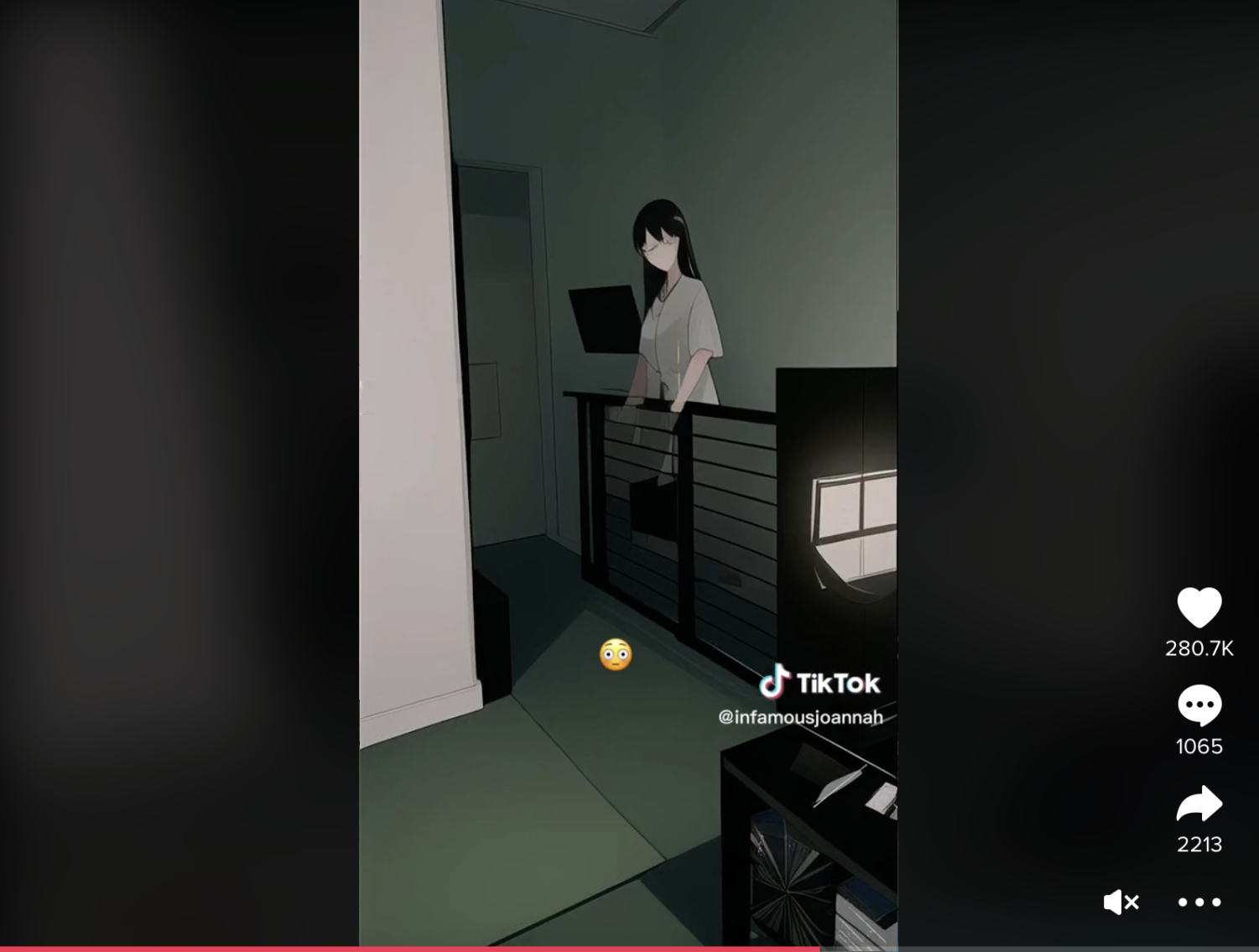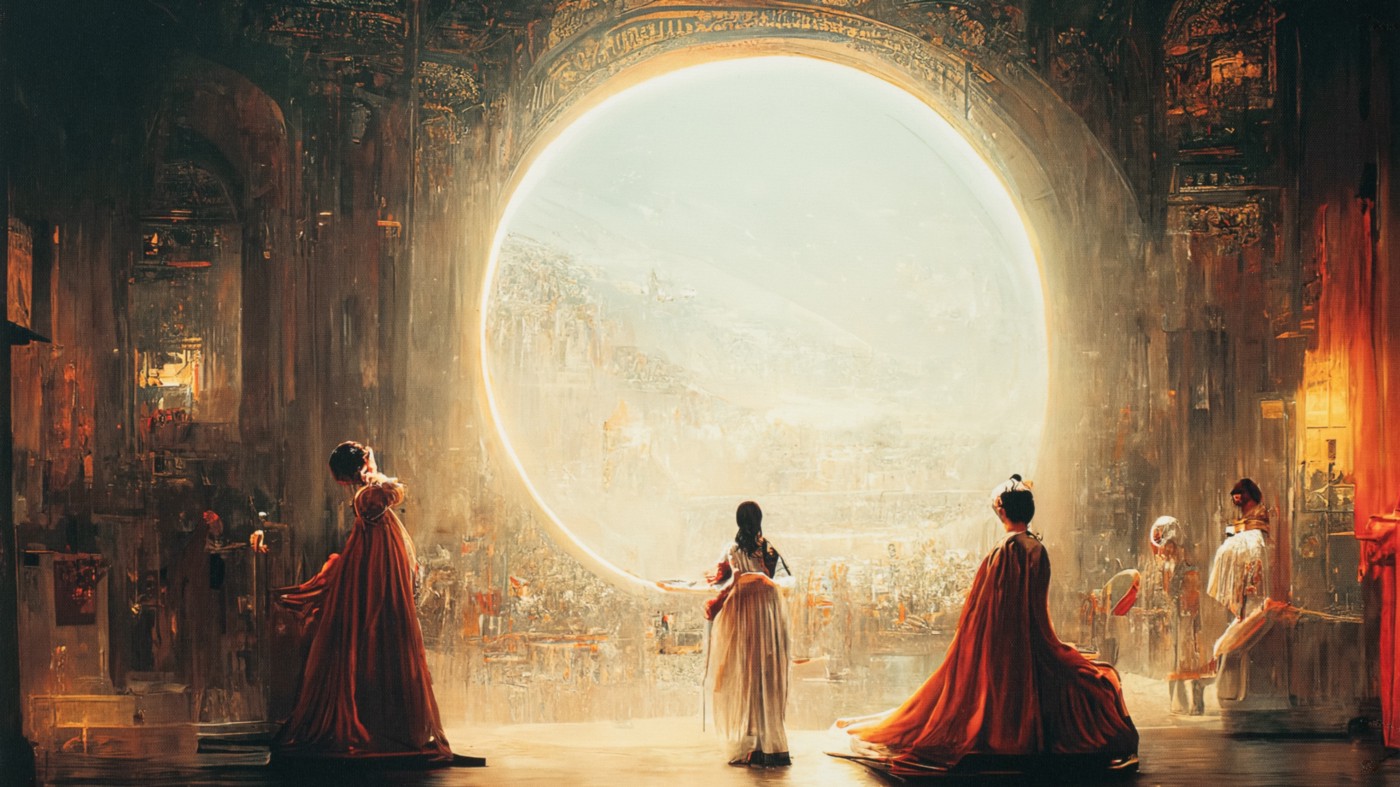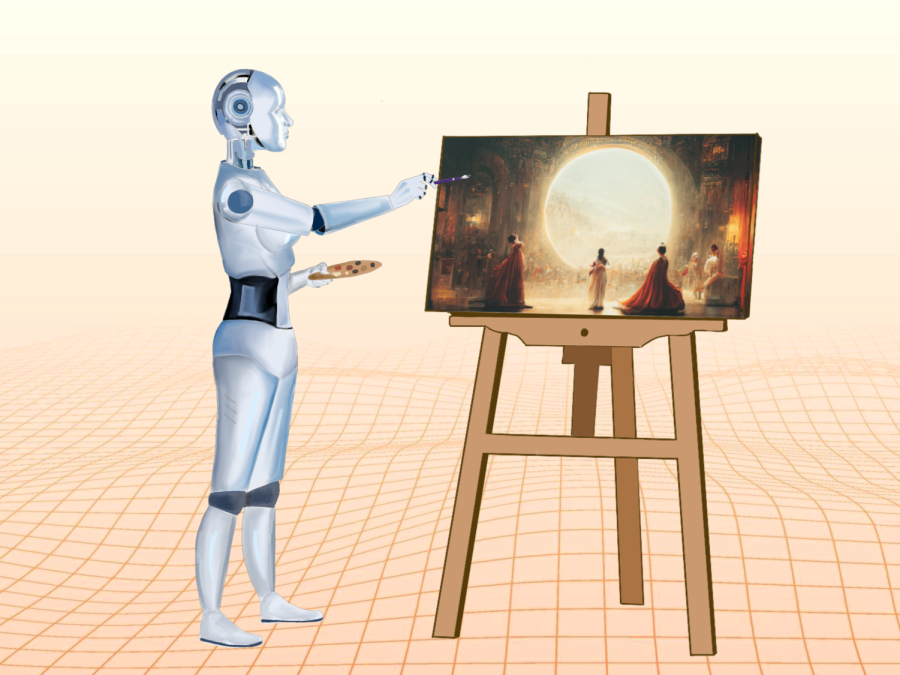Illustration by Ava Cho.
Artificial Painters Storm the Creative Field
Is AI Stealing the Spotlight from Artists?
March 14, 2023
Though the fear of Artificial Intelligence replacing human jobs existed for a long time, we always believed that inventive careers like artists would be safe from takeover by a thinking machine. However, technological developments seem to prove us wrong as a recent boom of AI artists and their work captured the public’s attention. In this digital age, AIs have learned to not only replicate but also create art; while some find this fascinating, others voice their fear of an unknown future creeping up on us.
So, what’s all the fuss about? The most well-known AI art comes from TikTok: it’s the AI Manga Filter Effect. This filter changes your video screen into a drawing, and unlike other visual effects that use a repetitive system, it creates an entirely new picture each time it perceives an image. As the name suggests, the results look like they’re straight out of a manga panel.
The #mangafilterchallenge gets people playing around with creativity. TikTokers film themselves trying to get the AI to design images they want, and share newly found hacks. For example, putting your fist in front of your stomach can prompt AIs to give abs in the manga version of yourself. TikTok users have fun figuring out how bizarre these images can get.
Another popular hashtag is #ghostdetector; TikTokers use the Manga filter to reveal any “figures” or supposed ghosts in the room. This trend began when tiktoker Joannah Castro (@infamousjoannah) filmed her house with the AI filter and it showed a girl walking up the staircase. As the video went viral, Castro later claimed, ‘It sounded like someone ran up the stairs and no one was there.”

Although these AI programs charmed many users with their comicality, others believe that they might not be all fun and games. Various individuals claim that the appearance of AI art may lead to a disaster for artists in the real world.
Since the boom of machine learning art, more companies showed interest in creating complex programs that can draw and paint as well as skilled experts – at a much quicker pace. While artists spend time, money, and effort on their designs, these machines can pump out hundreds and thousands of pieces from their databases.
Moreover, a recent incident shocked the art industry with just how far the AI influence reaches. Jason Allen’s Théâtre D’opéra Spatial took first place in the digital category at the Colorado State Fair of 2022, becoming the first AI-generated work to win an award. He used a program called Midjourney, easily accessible through Discord, which produces images based on text prompts. This demonstrated that anyone who can search websites can now win major art competitions.

Participants of the fair claimed that Allen cheated by using an AI program, but the victor stated that he didn’t violate any rules because there were no regulations against this newly formed concept. The incident proved how robotics developed to win real humans even in creative fields. Furthermore, questions regarding originality and integrity arose among critics.
Although Allen came up with the text prompt, in other words, the basic ideas of the image, he never had to go through the painstaking process of turning this inspiration into a visible piece with his artistic abilities. It was Midjourney that made the concept come to life. So, can we really credit Allen as an artist?
The other issue concerns plagiarism: Do AIs copy from other works? And the answer is, yes – at least for Midjourney. The program uses other art databases to collect information and formulates the acquired images according to the user’s input, meaning it takes pieces of others’ works to incorporate into its own creation, coming up with a mix and match of stolen ideas and styles.
The infringement doesn’t end here: image generator programs that can copy a specific artist’s drawing style exist on the internet. An art generator made by a former French game developer, 5you, draws anything in the style of a South Korean artist Kim Jung Gi with simple text prompts. The artist’s unique ink and brush illustrations are famous for their size and high detail, and while fanarts are common, the AI robotically copies his entire style. To add salt to the injury, this program was released a mere few days after Kim’s death. This action degraded his story-telling art into a simple product anyone could replicate, enraging many fans.
Highly developed art programs take over artisans’ careers and individuality, as computers produce unlimited robotic artworks faster than any human can. When AIs hold the power to duplicate distinct art styles or create a whole new piece all by themselves, what can actual creators do now to make themselves unique? We’re in for a blatantly unfair game, and unfortunately, it may only be the start of the often-imagined machine takeover. We should learn to beware of this game-changer and make sure not to take it too far out of technological curiosity.
